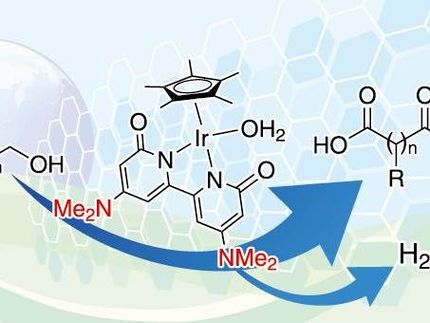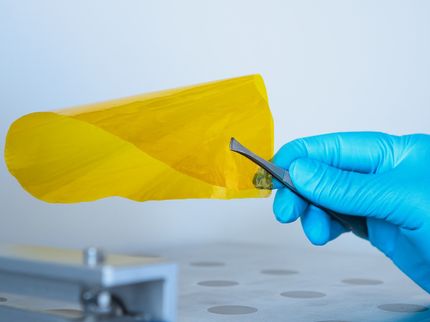A gigantic hydrogen deposit in northeast France?
Advertisement
Researchers have discovered a potential natural hydrogen deposit under the coalfields of the northeastern French Lorraine region – possibly the world’s largest reserve of this gas!
Is a new chapter about to open in the history of the Lorraine mining basin? Until now, this region at the border between France and Germany was best known for its coal mines, the last of which was shut down 20 years ago. But in the future it could become world famous for another major energy source hidden beneath its soil: hydrogen, or more precisely dihydrogen (H2). This new discovery is the result of analyses conducted by Philippe de Donato and Jacques Pironon, research professors at the GeoRessources Laboratory, in the nearby city of Nancy. “Our data indicates that the ground under the Lorraine mining basin is very rich in white hydrogen,” de Donato reports. “If confirmed, this discovery could be a big step forward in the transition towards clean, climate-friendly energy sources.”
Generally speaking, hydrogen is widely considered an essential driver in the effort to replace fossil fuels like coal, petroleum and natural gas. Unlike the latter, its combustion does not produce carbon dioxide (CO2), the greenhouse gas (GHG) thought to be the main contributor to climate change. For this reason, there is great hope that hydrogen will be used to power future vehicles equipped with fuel cells (a system that relies on hydrogen and oxygen to produce electricity). It could also provide a clean alternative for all of the industries that are currently dependent on methane, including cement plants, steel production, metallurgy, etc.
“White” hydrogen is the term used to designate dihydrogen that forms naturally underground. “It’s called ‘white’ because its production doesn’t generate greenhouse gases,” Pironon explains. “Unlike ‘black’ and ‘grey’ hydrogen, which are manufactured by processing coal and natural gas respectively – in other words, fossil fuels that generate large amounts of GHGs – white hydrogen is directly available.”
White hydrogen is greener than green hydrogen…
As a result, “this gas is even more ecological than ‘green’ hydrogen, which is produced by the electrolysis of water using electricity from renewable energy – solar or wind”, the researcher adds. “Indeed, these two energy sources are not neutral in terms of CO2 emissions, which are released throughout their production chain and during their transport.”
“Our discovery came somewhat by chance,” de Donato recounts. At first the geologists were looking for another resource beneath the Lorraine countryside: methane (CH4) resulting from the thermal evolution of coal over geological time. “Conducted as part of the REGALOR project2, which was launched in 2018 with the independent power company La Française de l’Energie, the purpose of our mission was to confirm an assessment carried out in 2012 by France’s IFPEN petroleum and new energies institute. After analysing a sample of the soil under the Lorraine mining basin, the institute concluded that it harboured 370 billion cubic metres of methane, which represents eight years of gas consumption in France.”
Verifying this estimate required the continuous measurement in situ (directly underground at depths of more than 1,000 metres) of the concentration of gases dissolved in the water of the aquifer, the water-permeable subterranean rock layer. To meet this challenge, the researchers had to develop a specialised probe. Created in collaboration with Solexperts, this innovative system, dubbed SysMoG™, was patented in April 2023.
In late 2022, it made it possible to establish a “profile” of the gas concentrations at various depths in a mine shaft outside the local town of Folschviller. Analyses of coal seams at 600 and 800 metres revealed a first important finding: the gas mixture present at those levels is more than 96% methane, i.e. nearly pure!
15% hydrogen some 1,000 metres down below
Confirming the IFPEN’s initial estimates, “this data is extremely encouraging”, de Donato says, “because it shows that the underground methane is not contaminated by an unwanted toxic or corrosive gas, as was the case with the Lacq deposit. So there will be no need for purifying treatments, a fact that greatly reduces its carbon footprint”.
Even more intriguingly, while conducting their measurements the researchers also detected the presence of another gas: the above-mentioned white hydrogen. “At 200 metres the concentration of this compound was very low – around 0.1%, which is quite common at this depth,” de Donato says. “So this initial measurement came as no surprise.” But then, as the probe descended further into the shaft, hydrogen levels began to rise… “We really started to wonder what was happening when they jumped from 1% to 6% between 600 and 800 metres. It was the first time anywhere in the world that such a high concentration of hydrogen had been found underground.” And that was only just the beginning. At 1,100 metres the level exceeded 15%. “That’s when we realised that we had possibly found an unsuspected deposit of white hydrogen!” de Donato exclaims.
The researchers believe that the precious gas is produced continuously by a veritable hydrogen “factory” hidden beneath our feet, and whose raw materials are water molecules and minerals made up of iron carbonates (FeCO3 and Ca(Fe,Mg,Mn)(CO3)2 ). As Pironon explains, “The earth around the Folschviller mine is rich in those two types of compounds. When they come into contact, a physicochemical reaction called redox occurs, in which the minerals separate water molecules (H2O) into oxygen (O2) and hydrogen (H2).”


































































